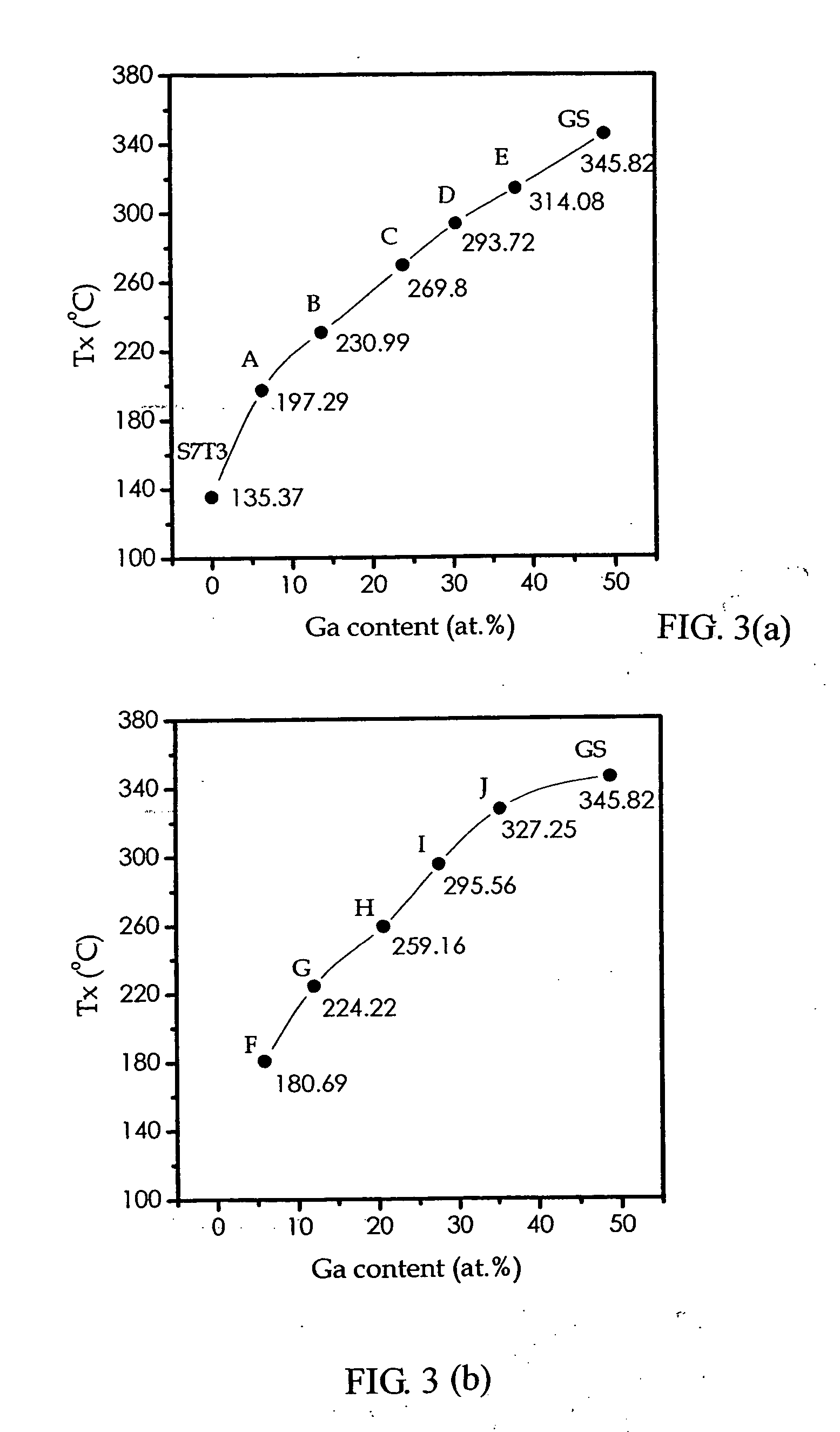Phase-change recording media based on the Ga-Sb-Te system for ultra-high density optical recording
a recording media and phase-change technology, applied in the field of optical recording media, can solve the problems of reducing the time for crystallization, affecting reducing the quality of optical recording, so as to improve the recording density, enhance the data transfer rate, and enhance the recording density
- Summary
- Abstract
- Description
- Claims
- Application Information
AI Technical Summary
Benefits of technology
Problems solved by technology
Method used
Image
Examples
Embodiment Construction
(1) Alloy Design
[0032] The designed and studied alloy compositions are shown by the area bounded by points I, II, III and IV in FIG. 2. There are two series of compositions: A, B, C, D, and E along the Sb7Te3—GaSb tie-line (tie line 1); and compositions F, Q H, I, and J along the Sb2Te3—GaSb tie line (tie line 2). All of them can be represented by the formulae:
(SbxTe100-x)1-z(GaySb100-y)z
35≦x≦80; 40≦y≦50; 0.05≦z≦0.9,
whereas three Reference compositions locates at x=40, 70, z=0; and y=50, z=1 were designed to represent Sb2Te3, Sb7Te3 and GaSb, respectively.
(2) Preparation of Alloy Targets
[0033] Any methods known in the prior art can be used in the preparation of the designed alloys, and a target for forming a layer of the designed alloys of the present invention. The following examples are illustrative only, and not limitative of the remainder of the disclosure in any way whatsoever. GaSb, Sb7Te3 and Sb2Te3 alloy ingots was prepared by sealing high purity beads of Ga and Sb,...
PUM
 Login to View More
Login to View More Abstract
Description
Claims
Application Information
 Login to View More
Login to View More - R&D
- Intellectual Property
- Life Sciences
- Materials
- Tech Scout
- Unparalleled Data Quality
- Higher Quality Content
- 60% Fewer Hallucinations
Browse by: Latest US Patents, China's latest patents, Technical Efficacy Thesaurus, Application Domain, Technology Topic, Popular Technical Reports.
© 2025 PatSnap. All rights reserved.Legal|Privacy policy|Modern Slavery Act Transparency Statement|Sitemap|About US| Contact US: help@patsnap.com



